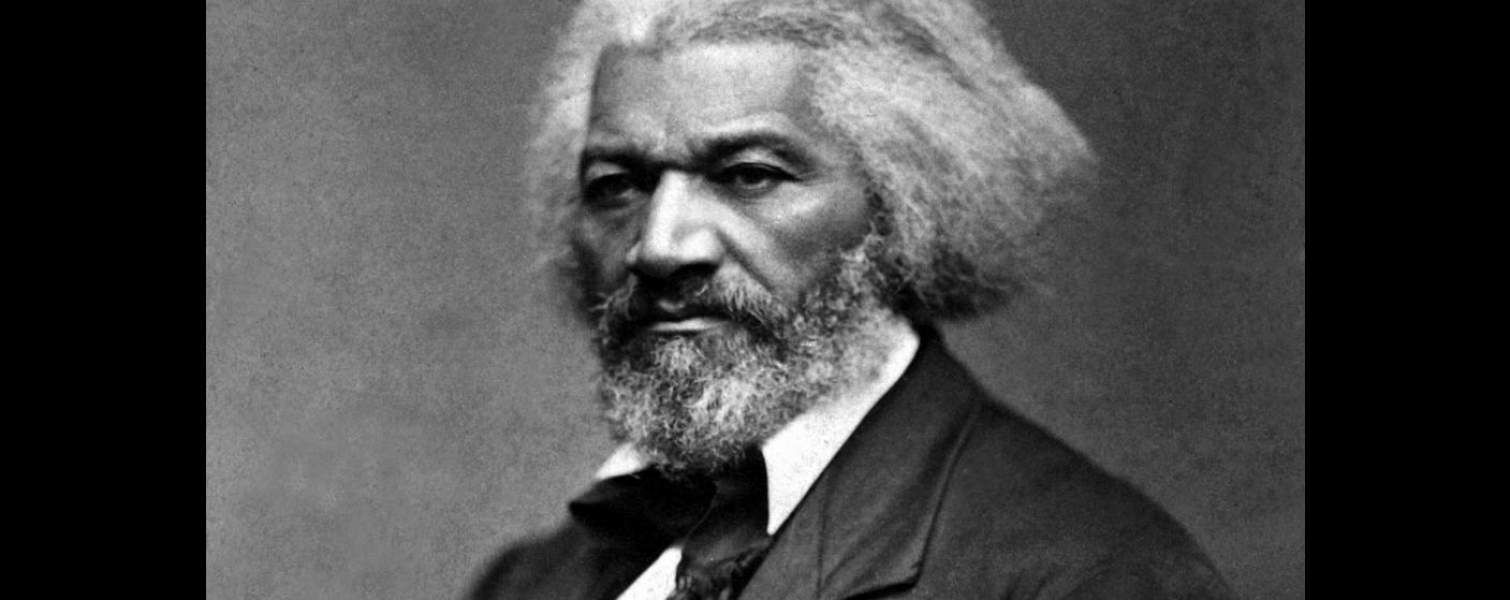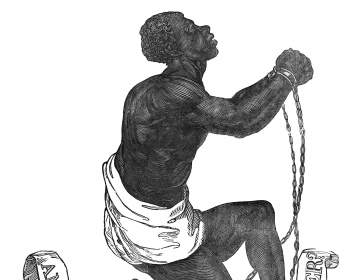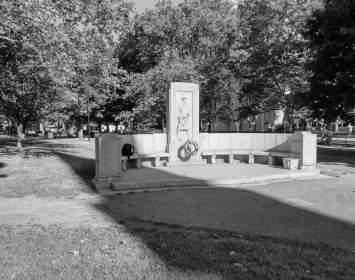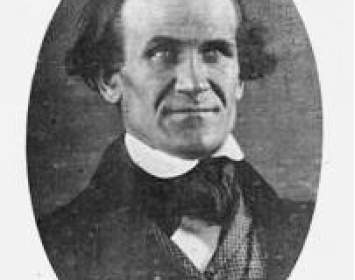Abolitionists Stephen and Rosa Smith lived on the north side of Fayette Park, now Firefighters’ Memorial Park, in downtown Syracuse. Learning that famed former slave and abolitionist orator Frederick Douglass had been unable to secure a hall in which to speak during a July 1843 visit to Syracuse, the Smiths invited Douglass to speak in front of their residence at the park.
On the morning of Sunday, July 30, 1843, Douglass began to speak in the park to an audience of only five persons. He persevered, and by afternoon the crowd swelled to five hundred. That evening, the First Congregationalist Church, a pioneering abolitionist church founded in 1838, gave Douglass the use of an old building in which he could continue his impromptu convention for three more days. His effort to recruit abolitionist activists in Syracuse became a very great success.
The event was not without its ironic postscript. The Massachusetts Anti-Slavery Society, which had supported Douglass’s trip, had a paid agent working in west-central New York State: minister-turned-freethinker-turned-socialist radical John Anderson Collins. Unknown to his employer, Collins had been spending most of his time lecturing on the radical Utopianism of French thinker François Marie Charles Fourier and taking preliminary steps to organize an ostensibly Fourierist communalist experiment at nearby Skaneateles. To Douglass’s intense annoyance, Collins’s own remarks during the course of the Syracuse event dwelled little on ending slavery but instead promoted Collins’s communalist project. Much time was devoted to a scheme to abolish private property whose debt to Fourier’s theories was foggy at best. Douglass angrily complained to the Anti-Slavery Society’s headquarters in Boston, threatening to resign if he had to work again with someone who viewed abolition work as "a mere stepping stone to his own private theory of the right of property holdings." Collins was dismissed from the Anti-Slavery Society and went on to launch the ill-provisioned Skaneateles Community, which would survive for only about three years.





